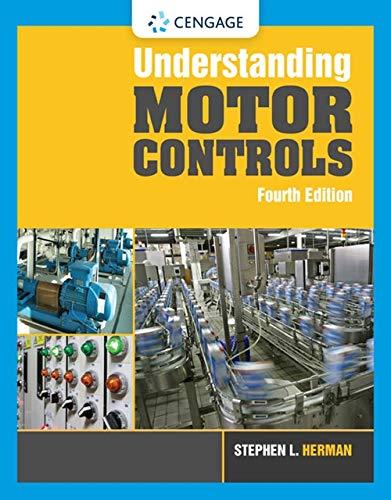
Understanding Motor Controls
4th Edition
ISBN: 9781337798686
Author: Stephen L. Herman
Publisher: Delmar Cengage Learning
expand_more
expand_more
format_list_bulleted
Concept explainers
Question
Chapter 23, Problem 8RQ
To determine
The synchronous speed.
Expert Solution & Answer
Want to see the full answer?
Check out a sample textbook solution
Students have asked these similar questions
Problem 5
1.
Where and why is a centrifugal switch used in a split-phase motor?
2.
Why and where is a capacitor used in the single-phase AC motor?
3. What type of motor would you select to perform each of the following jobs?
(a) Electric drill:
(b) Refrigerator:
(c) Hair driers and desk fans:
(d) Air Conditioner Fan:
(e) XY plotters and printers:
(f) Electric clock:
Name three factors that determine the amount of voltage induced in the rotor of a wound-rotor motor.
Question 2
Beli vifth
Slack side
Motor
(imprut)
Tight side
Beli thickpess\
Centre distance
Figure 2
Figure 2 shows an open flat belt drive connected to a motor and a pulley. The
motor transmits 20 kw to the connect pulley of 450 mm diameter and is rotating
at 850 r/min to a second pulley rotating at 400 r/min. The distance between
pulley centres is approximately 2 m. The belt is 6 mm thick and has a density of
970 kg/m. The maximum stress in the belt is not to exceed 2,7 MPa. The
coefficient of friction for both pulleys is 0,3.
Determine:
2.1. The diameter of the second pulley.
2.2. The length of the belt.
3.3. The width of the belt taking centrifugal tension into account.
Chapter 23 Solutions
Understanding Motor Controls
Knowledge Booster
Learn more about
Need a deep-dive on the concept behind this application? Look no further. Learn more about this topic, mechanical-engineering and related others by exploring similar questions and additional content below.Recommended textbooks for you
 Understanding Motor ControlsMechanical EngineeringISBN:9781337798686Author:Stephen L. HermanPublisher:Delmar Cengage Learning
Understanding Motor ControlsMechanical EngineeringISBN:9781337798686Author:Stephen L. HermanPublisher:Delmar Cengage Learning Electrical Transformers and Rotating MachinesMechanical EngineeringISBN:9781305494817Author:Stephen L. HermanPublisher:Cengage Learning
Electrical Transformers and Rotating MachinesMechanical EngineeringISBN:9781305494817Author:Stephen L. HermanPublisher:Cengage Learning

Understanding Motor Controls
Mechanical Engineering
ISBN:9781337798686
Author:Stephen L. Herman
Publisher:Delmar Cengage Learning

Electrical Transformers and Rotating Machines
Mechanical Engineering
ISBN:9781305494817
Author:Stephen L. Herman
Publisher:Cengage Learning